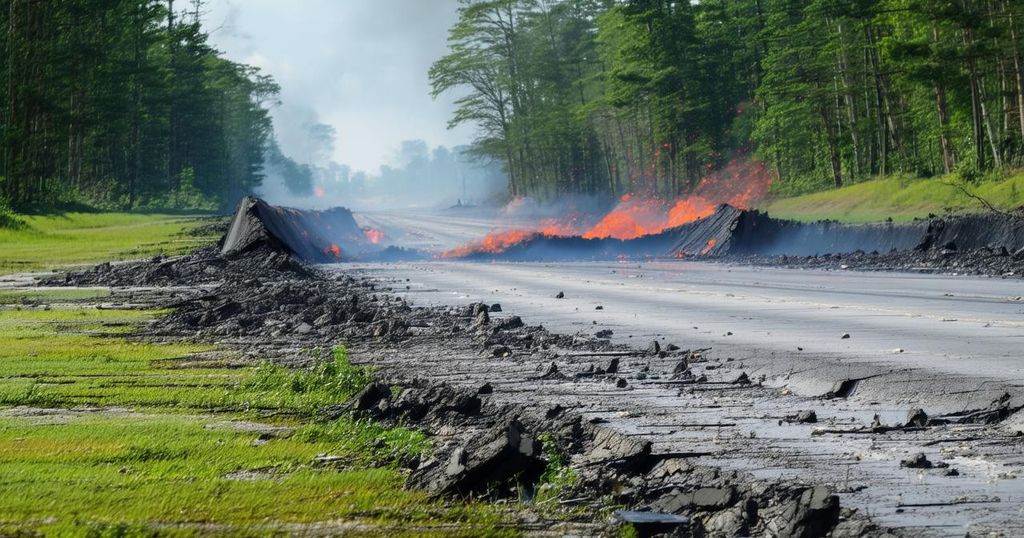This article outlines the five most powerful earthquakes ever recorded, detailing their magnitudes, consequences, and the global response mechanisms that followed each disaster. The Valdivia Earthquake leads with a staggering magnitude of 9.5, while subsequent significant earthquakes include the 1964 Great Alaska Earthquake, the 2004 Sumatra-Andaman Earthquake, the 2011 Tohoku Earthquake, and the 1952 Kamchatka Earthquake.
The most powerful earthquake ever recorded is the Valdivia Earthquake, which struck on May 22, 1960, with a magnitude of 9.5. This earthquake, also known as the Great Chilean Earthquake, predominantly affected the Bio-Bio region of Chile. The seismic event caused significant shaking that endured for approximately ten minutes and generated a series of tsunami waves that cascaded across the Pacific Ocean. The disaster resulted in an estimated death toll of 1,600 individuals and left approximately 2 million homeless, not to mention the over 200 fatalities attributed to the tsunamis in Hawaii, Japan, and the Philippines. Additionally, the earthquake instigated the eruption of the Cordón Caulle volcano in Chile, compounding the devastation in the region. The second most significant earthquake is the 1964 Great Alaska Earthquake, measuring 9.2, which occurred on March 27. Known as the Good Friday Earthquake, it inflicted severe damage on Anchorage and surrounding locales due to substantial land subsidence and intense seismic shaking. The resulting tsunami affected coastal regions along the Pacific from Alaska to California, though the death toll remained relatively low at 131, largely due to the sparse population density in affected areas. On December 26, 2004, the 2004 Sumatra-Andaman Earthquake, measuring 9.1, struck off the northwest coast of Sumatra, triggering a massive tsunami that devastated multiple countries, including Indonesia, Thailand, Sri Lanka, and India. The catastrophic event led to over 230,000 fatalities and severe damages in coastal communities, prompting global efforts to enhance tsunami warning and evacuation systems. The 2011 Tohoku Earthquake, also measuring 9.1, took place on March 11 off the east coast of Honshu, Japan, lasting over six minutes and generating a tsunami that caused unprecedented destruction in northeastern Japan. This disaster resulted in approximately 18,000 deaths and led to the Fukushima nuclear plant meltdown. The tsunami waves extended as far as Hawaii and other distant shores, prompting Japan to revisit its disaster preparedness and building codes. Lastly, the Kamchatka Earthquake, occurring on November 4, 1952, recorded a magnitude of 9.0. Though it was significant in magnitude, its impact was mitigated by its remote location, resulting in a death toll estimated at 10,000 to 15,000. The tsunami generated affected the Aleutian Islands and caused approximately $17 million worth of damage in Hawaii. In Russia’s Severo-Kurilsk, massive waves devastated a third of its small population, necessitating reconstruction at a higher elevation.
This article details the five most powerful earthquakes ever recorded in history, emphasizing their magnitudes rather than the associated fatalities or damage. Earthquakes are natural disasters that result from the sudden release of energy in the Earth’s crust, leading to seismic waves that can cause substantial destruction. The magnitude of an earthquake is measured on the Richter scale, and as seen in various events throughout history, higher magnitudes correlate with increased potential for damage. The Valdivia and Alaska earthquakes are notable examples, as they have shaped our understanding of seismic activity and contributed to advancements in safety protocols and engineering practices.
In summary, this examination of the strongest earthquakes showcases the sheer magnitude of natural disasters and their far-reaching consequences. The Valdivia Earthquake leads the list with a magnitude of 9.5, dramatically affecting millions and serving as a pivotal event in seismic history. Other notable earthquakes, including those in Alaska, Sumatra, Tohoku, and Kamchatka, each reveal the critical need for continuous improvement in disaster preparedness and resilient infrastructure to safeguard communities from future seismic events.
Original Source: science.howstuffworks.com






